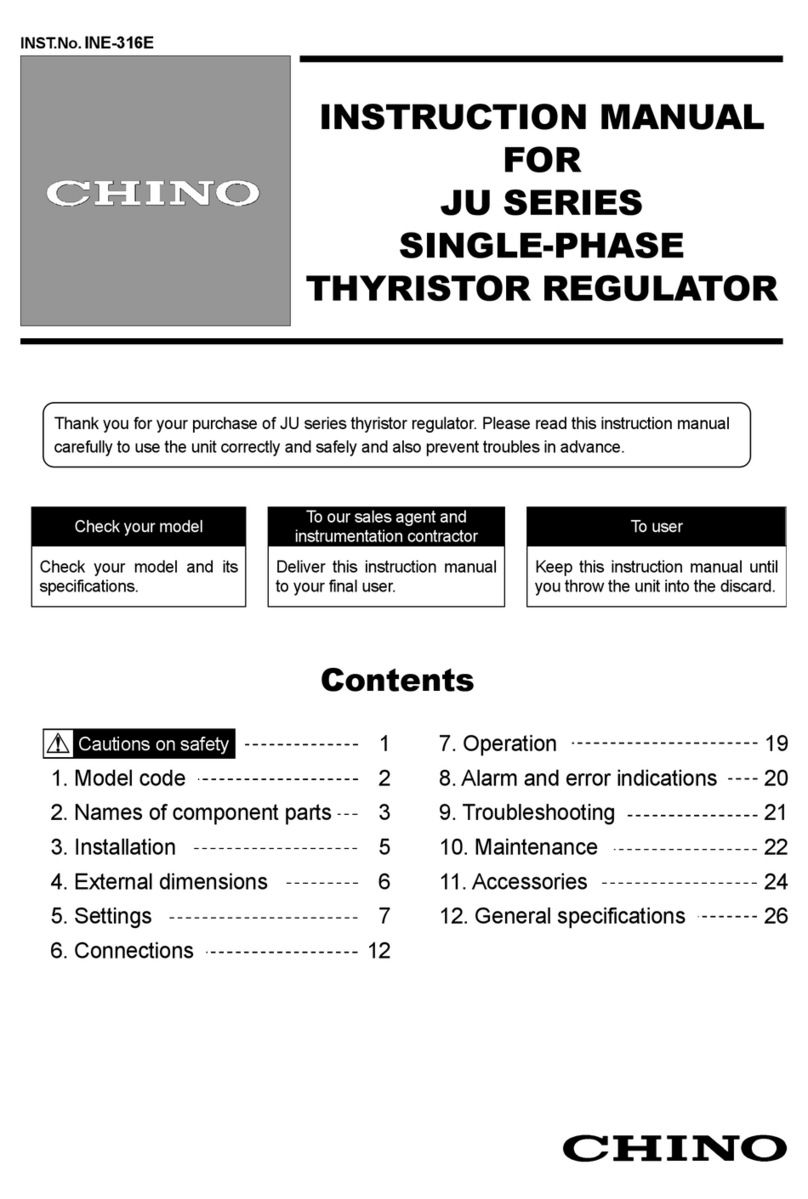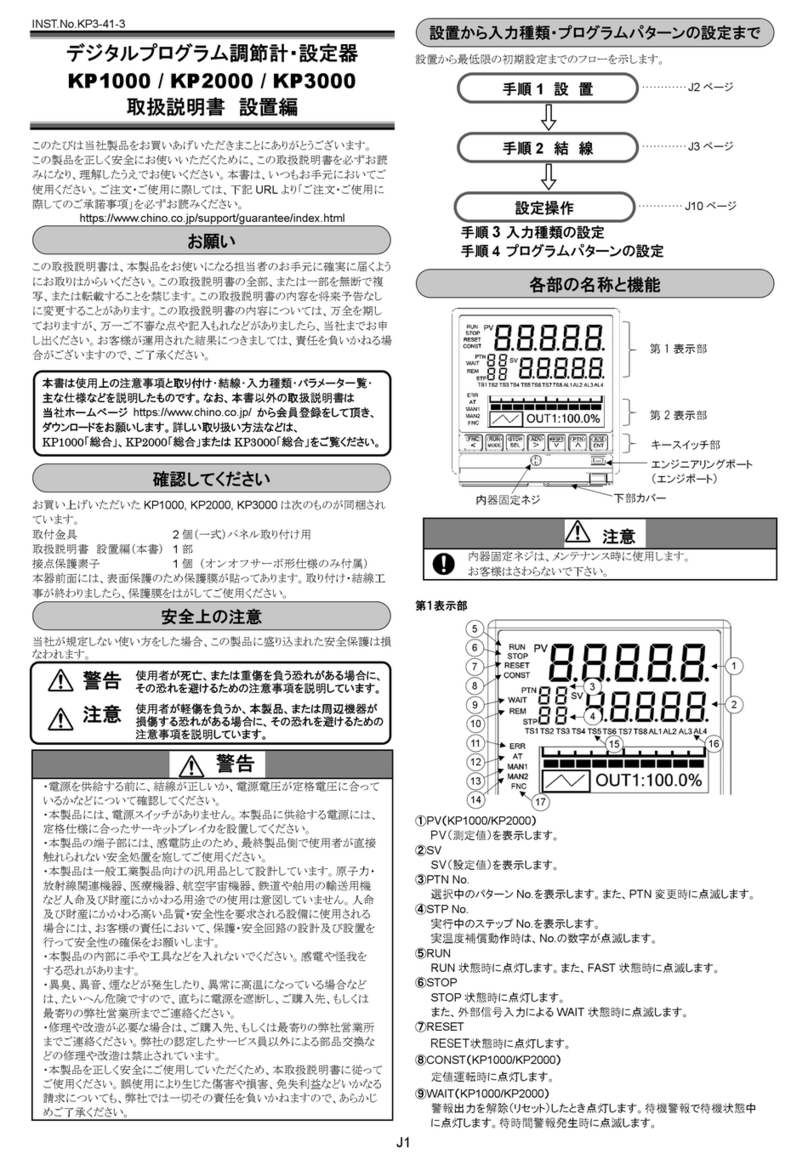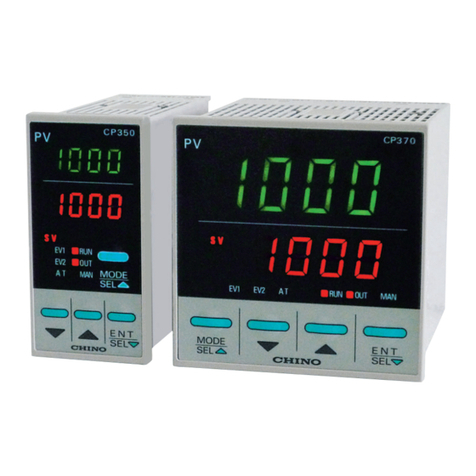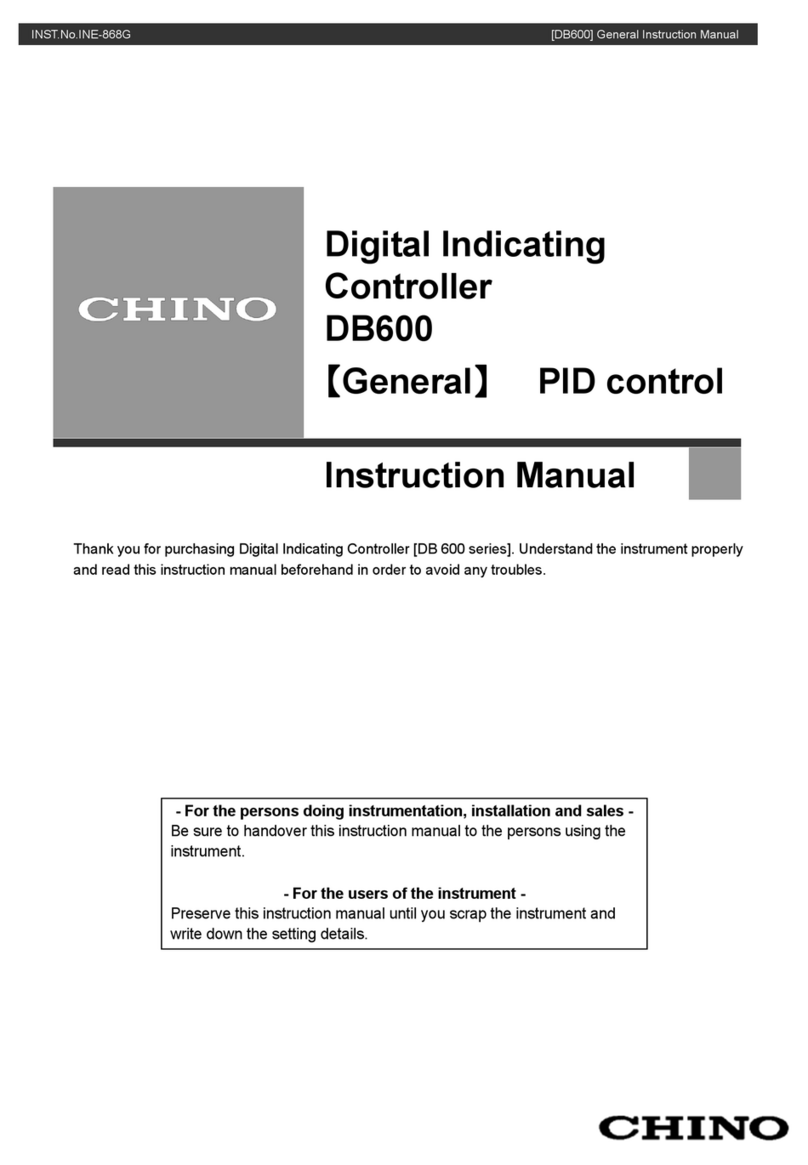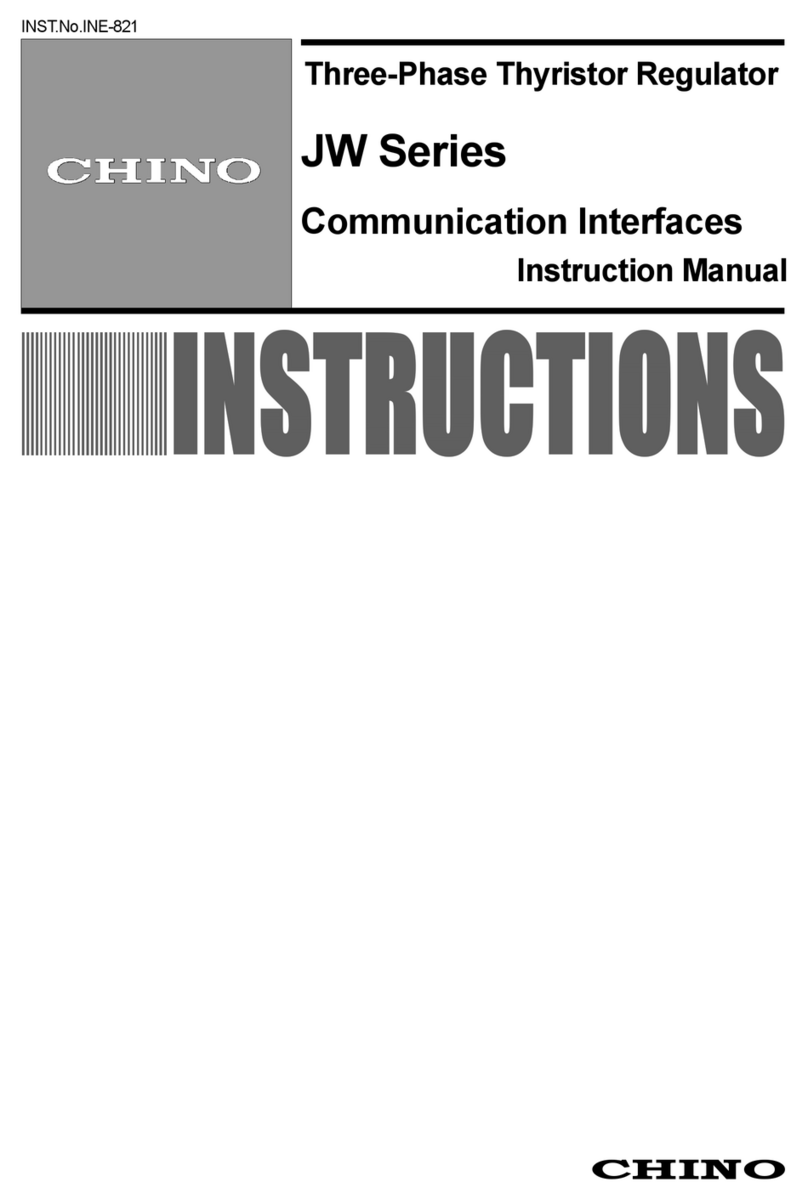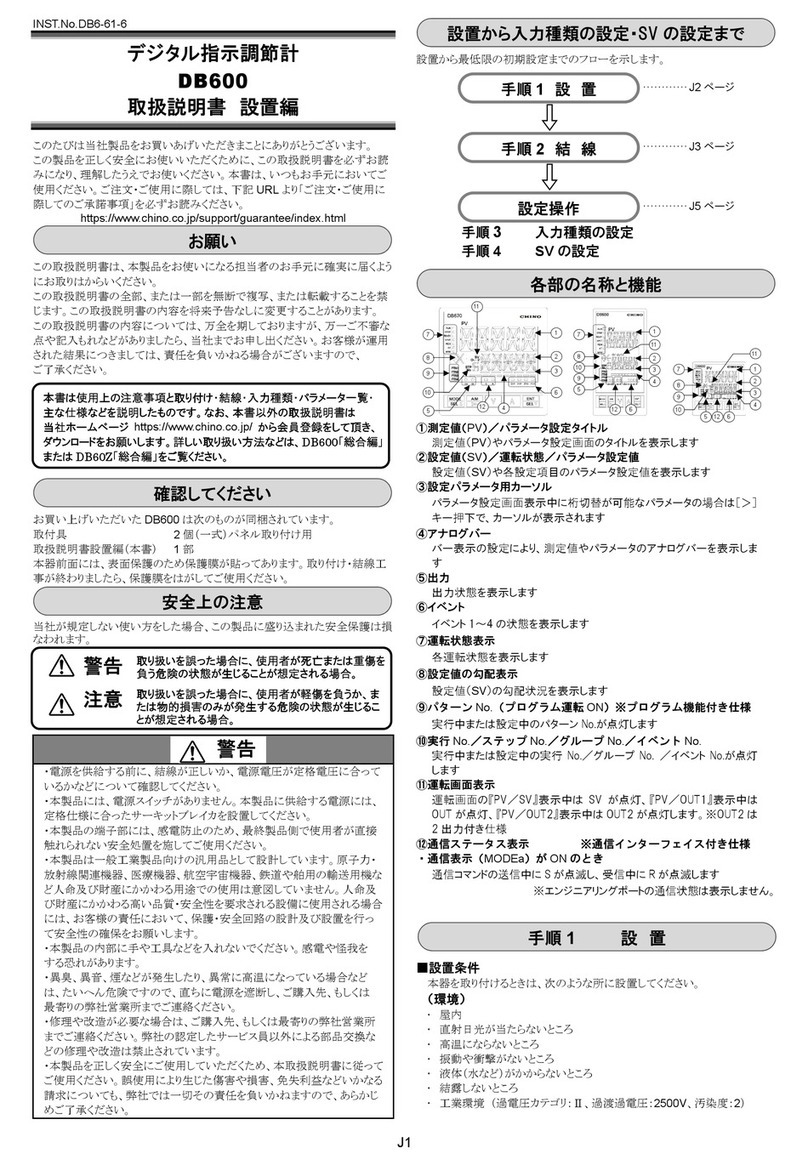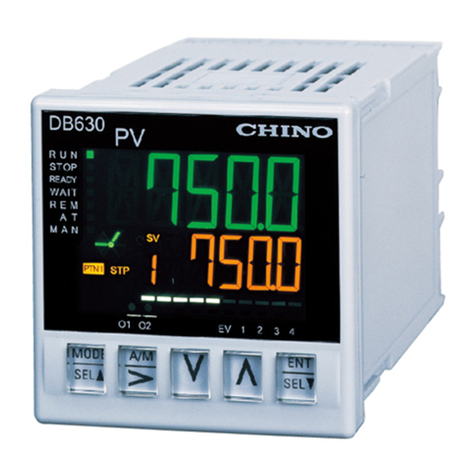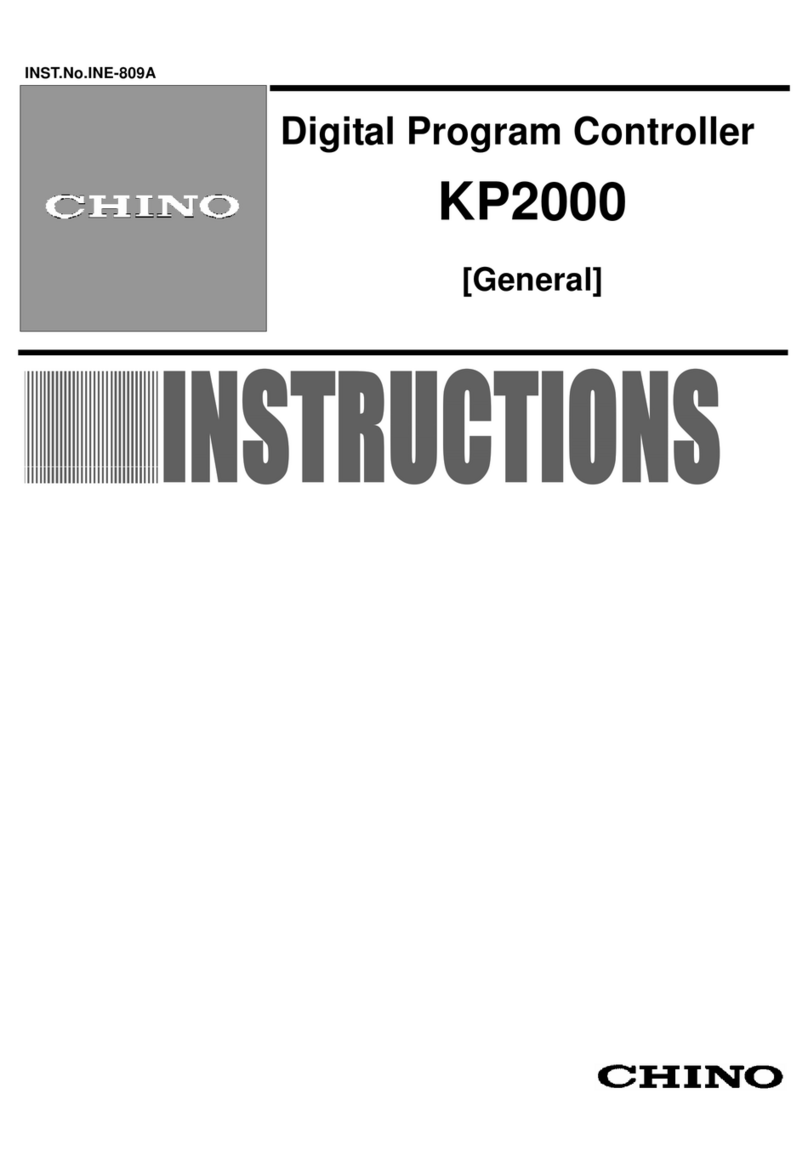
−2−
1GENERAL
There are one types of communication interfaces RS-485 available between the LT830 controllers
and personal computers (PCs).
PCs can be used to receive measured data from the LT830 controllers, program different parameters
and issue control commands. The number of LT830 controllers that are connectable to a PC is up to
31 for the RS-485.
1.1 RS-232C Communications Interface
The RS-232C is the data communications standard being set and issued by EIA (Electronic Industries
Association) in the USA and JIS C 6361 in Japan.
This standard is a basic interface between MODEM and connected data terminal units, and specifies
electrical and mechanical specifications only. Most of the RS-232C communications interface is being
used for personal computers and industrial instruments do not completely conform to this standard at
present, and have different signal wire numbers, connectors to those specified in the standard. Also,
since this standard does not specify any software parts, or so-called [data transmission procedures],
units having the RS-232C communications interface can not be interconnected with each other
unconditionally. With these reasons, users must survey and check the specifications and transmission
procedures in advance of units being connected. However, if the counter unit is for a personal
computers or similar device which can optionally program the specifications, then all the units can be
combined by having proper programs prepared by a program designer.
In addition, when a RS-232C standard is investigated, the method of having JIS C 6361 referred to is
the easiest.
1.2 RS-485 Communications Interface
The RS-485 communications interface can communicate with multiple LT830 controllers (up to 31
sets) in parallel by signals conforming to RS-485.
There are few personal computers which provide RS-485 communications interface. However, since
these communications interfaces are characterized with serial communications, these are easily
connectable to the personal computer having the RS-232C communications interface by using an
RS-485 ⇔RS-232C signal converting unit. A line converter (Model SC8-10: sold separately) is
available for RS-485 ⇔RS-232C signal conversion at CHINO.
2COMMUNICATIONS PROTOCOL
LT830 controller has a MODOBUS communication protocol.
MODBUS Protocol (MODBUS is the registered trademark of Schneider Automation Inc.)
MODBUS Protocol has RTU mode and ASCII mode that can be selected by key programming.
MODBUS protocol provides the function of transmitting measured data as well as the programming
and operating function.

